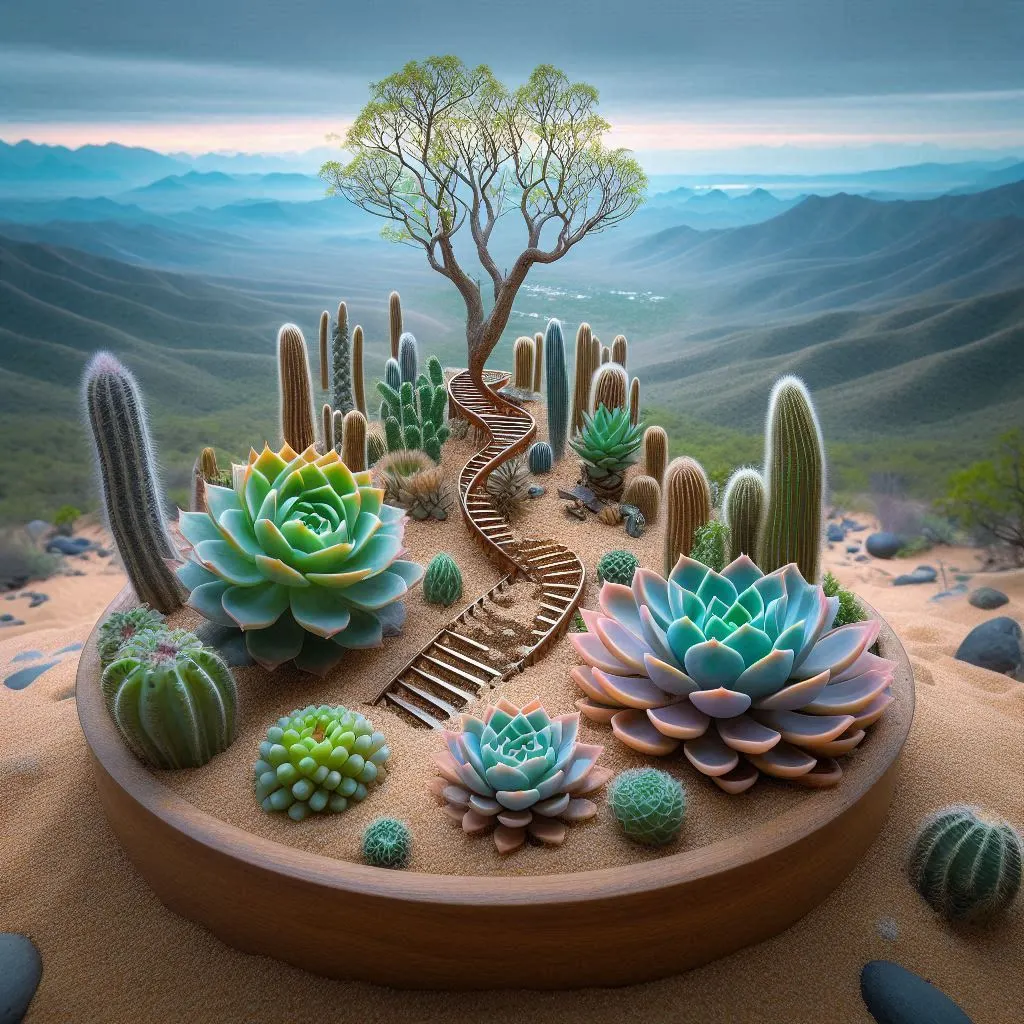Understanding the Growth Patterns of Desert Succulents

1. What Are Desert Succulents?
Desert succulents are fascinating plants that have adapted to survive in some of the harshest environments on Earth. They are known for their ability to store water in their thick, fleshy leaves, stems, or roots, which allows them to endure long periods of drought. Common examples of desert succulents include various species of cacti, aloe vera plants, jade plants, and agave plants.
2. Why Do Succulents Grow in Deserts?
Deserts are characterized by extreme conditions such as high temperatures, low humidity, and scarce rainfall. These harsh environmental factors make it challenging for most plants to survive. However, succulents have evolved unique adaptations that enable them to thrive in desert regions. Their ability to store water in specialized tissues and their efficient water use make them well-suited for arid environments.
3. How Do Desert Succulents Store Water?
One of the key features of desert succulents is their water-storing capacity. They store water in various plant parts such as leaves, stems, or roots, depending on the species. The thick, fleshy tissues of succulents act as reservoirs, allowing them to retain water for extended periods. This adaptation helps succulents survive drought conditions by reducing water loss through evaporation.
4. Understanding the Growth Cycle of Succulents
4.1 Germination: How Succulents Begin to Grow
The growth cycle of succulents begins with germination, which is the process of a seed developing into a seedling. Succulent seeds require specific environmental conditions such as proper moisture, temperature, and light to germinate successfully. Once germination occurs, the seedling begins to establish its root system and develop its characteristic features.
4.2 Growth Factors: What Succulents Need to Thrive
To thrive, succulents require several essential factors:
- Sunlight: Most succulents prefer bright sunlight to thrive and undergo photosynthesis, a process essential for their growth and energy production.
- Well-draining Soil: Succulents require soil that allows excess water to drain quickly, preventing waterlogged conditions that can lead to root rot.
- Occasional Watering: While succulents are drought-tolerant, they still need occasional watering, especially during their active growth periods. However, overwatering should be avoided as it can harm succulents.
- Proper Temperature: Succulents have specific temperature preferences, generally thriving in warm to hot climates but needing protection from extreme heat or cold.
4.3 Reproduction: How Succulents Make New Plants
Succulents can reproduce through various methods:
- Seeds: Succulent seeds can be collected and planted to grow new plants, although this method requires patience as seedlings take time to mature.
- Offsets: Many succulents produce offsets or “pups,” which are small plants that grow adjacent to the parent plant. These offsets can be separated and replanted to propagate new plants.
- Stem Cuttings: Succulent stems can be cut and planted to develop new roots, creating clones of the parent plant.
- Leaf Cuttings: Some succulents, like certain types of jade plants, can be propagated by planting individual leaves, which develop into new plants given the right conditions.
5. Adapting to Desert Life: How Succulents Survive
Succulents have evolved several strategies to survive in desert environments:
- Water Storage: Their ability to store water allows succulents to endure long periods of drought without wilting or drying out.
- Reduced Leaves: Many succulents have reduced leaf surfaces or spines, which minimize water loss through transpiration.
- Shallow Roots: Succulents often have shallow root systems that quickly absorb water from brief rainfall or condensation.
- Protective Features: Some succulents have evolved spines, thorns, or waxy coatings on their surfaces to deter herbivores and reduce water loss.
6. Common Types of Desert Succulents
There is a wide variety of desert succulents, each with unique characteristics and appearances. Some common types include:
- Cacti: Known for their iconic spines and ability to store water in their stems, cacti are among the most well-known desert succulents.
- Agave Plants: These succulents often have large, fleshy leaves arranged in rosettes and are known for their use in producing agave nectar and tequila.
- Aloe Vera: Recognized for its medicinal properties, aloe vera plants have thick, succulent leaves filled with a gel-like substance used for skincare and minor burns.
- Echeveria: With their rosette-shaped clusters of colorful leaves, echeverias are popular ornamental succulents in gardens and indoor settings.
- Haworthia: Characterized by their small, clustered rosettes and often translucent leaves, haworthias are valued for their decorative appeal.
7. Caring for Desert Succulents at Home
Caring for desert succulents at home requires understanding their specific needs:
- Sunlight: Place succulents in bright, indirect sunlight for optimal growth. Rotate pots occasionally to ensure even exposure.
- Soil: Use well-draining soil mixes formulated for succulents or add perlite/sand to regular potting soil to improve drainage.
- Watering: Water succulents sparingly, allowing the soil to dry out between waterings to prevent root rot. Adjust watering frequency based on environmental conditions and plant growth.
- Temperature: Keep succulents in temperatures between 60-80°F (15-27°C), protecting them from extreme heat or cold.
- Potting: Choose pots with drainage holes to prevent water accumulation at the roots.
8. Conclusion: Appreciating the Beauty and Resilience of Desert Succulents
In conclusion, desert succulents showcase remarkable adaptations that allow them to thrive in challenging desert climates. Their unique growth patterns, water-storing abilities, and resilience make them not only survivors but also popular choices for home gardens, xeriscapes, and indoor spaces. By understanding their needs and providing proper care, enthusiasts can enjoy the beauty and diversity of desert succulents while appreciating their role in nature’s intricate ecosystems. Experimenting with different species and propagation methods can further enhance the joy of cultivating these fascinating plants.